| Columns Retired Columns & Blogs |
Correct me if I am wrong; but shouldn't this be called PrimaChina?
I measured the PrimaLuna DiaLogue Premium's performance using Stereophile's loan sample of the top-of-the-line Audio Precision SYS2722 system (see the January 2008 "As We See It" and www.ap.com). With two choices of output tube, each capable of being operated in Triode (green LED) or Ultralinear (red LED) mode, and with three output-transformer taps available, the DiaLogue Premium offers 12 different ways of being used, and is therefore 12 different amplifiers in one chassis. Because a full characterization of the behavior of each of those 12 amplifiers would have been an incredibly time-consuming procedure, I concentrated on the PrimaLuna's performance with KT120 output tubes operated in Triode mode, which was Art Dudley's preference, repeating some of the measurements in the other 11 operating conditions.
Getting the common factors out of the way first, the input impedance was very high, ranging from 81k ohms at 20Hz to 112k ohms at 20kHz, and the amplifier was non-inverting (ie, preserved absolute polarity) in all 12 modes. However, the voltage gain, measured into 8 ohms, was different for all 12 modes of operation, though in no case was it particularly high, as had been conjectured by Art Dudley. The highest gain into 8 ohms was with EL34 tubes in Ultralinear mode from the 16 ohm transformer tap, at 25.6dB, a couple of dB lower than the 27dB typical of a solid-state design; the lowest gain was with Triode-connected KT120s from the 4 ohm tap, at 19.6dB. In general into 8 ohms: the 16 ohm tap was about 1dB more sensitive than the 8 ohm tap, which in turn was about 1.5dB more sensitive than the 4 ohm tap; EL34s gave about 1dB more gain than KT120s; and Ultralinear gave approximately 3dB more gain than Triode.
The output impedance varied widely, from an extraordinarily high 15 ohms with EL34s and 14 ohms with KT120s from the 16 ohm tap, both tubes in Ultralinear mode, to 2.4 ohms with EL34s and 2.15 ohms with KT120s, both tubes in Triode mode, from the 4 ohm tap. The output impedance from the 8 ohm tap was lowest with both tubes in Triode mode, at 4.6 ohms (EL34s) and 3.9 ohms (KT120s). Changing to Ultralinear mode raised these impedances to 7.9 and 7.4 ohms, respectively.
With these high output impedances, the DiaLogue Premium's frequency response will be altered to a significant extent by the Ohm's law interaction between these impedances and the manner in which the loudspeaker's impedance changes with frequency. The gray trace in fig.1, for example, shows the amplifier's response with Ultralinear KT120s driving our standard simulated loudspeaker. The variations are a very audible +4.5/–4dB. Even with the lowest output impedance, with KT120s in Triode mode driving the load from the 4 ohm tap, the variations are still ±1.2dB (fig.2), which will be audible. In both these graphs, the channels are superbly well matched, however.

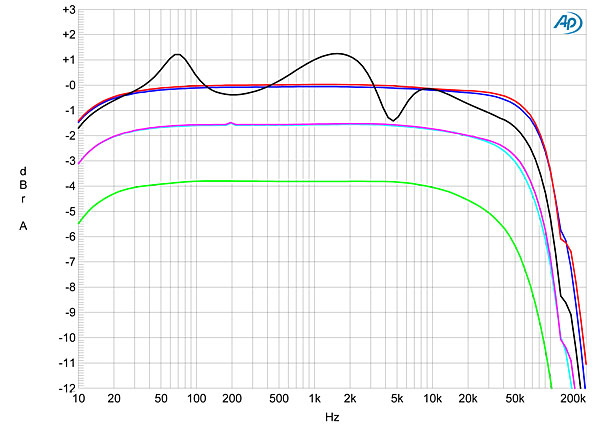
Note that in Ultralinear mode (fig.1) there is a small rise in response above the audioband, with another sharp peak around 140kHz disturbing what would otherwise be a steep ultrasonic rolloff. In Triode mode (fig.2) the rolloff is smooth above the audioband, and the resonance at 140kHz is well damped. Correlating with this behavior in the frequency domain, the PrimaLuna's Ultralinear reproduction of a 10kHz squarewave (fig.3) showed some mild overshoot and four cycles of ringing. By contrast, in Triode mode (fig.4), though there was still a very slight degree of overshoot, there was no ringing. The flat tops on these and the 1kHz squarewaves (not shown) correlate with the amplifier's extended low-frequency response. The DiaLogue Premium uses well-engineered output transformers.

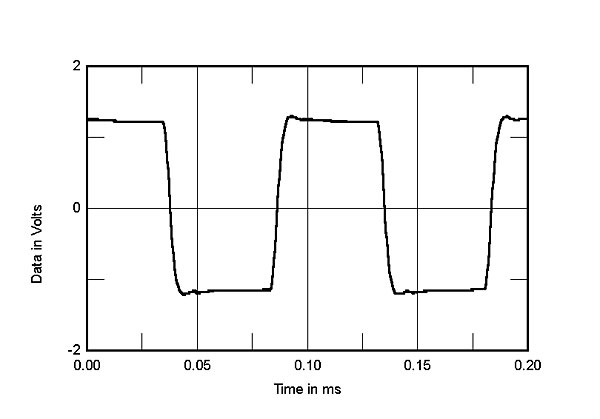
Channel separation was good, at around 80dB in both directions at 1kHz, but decreased to 57dB (L–R) and 62dB (R–L) at the top of the audioband. The wideband, unweighted signal/noise ratio, measured with the input shorted and with the KT120s in Triode mode driving 8 ohms from the 8 ohm tap, was an okay 77.3dB. The S/N ratio decreased by around 4dB in Ultralinear mode, due to the higher gain, while A-weighting the measurement gave an excellent 98dB Triode and 93.6dB Ultralinear. A-weighting reduces the effect of noise at low and high frequencies on the measured ratio; the improvement I found when A-weighting the measurement was due to the fact that the PrimaLuna's noise floor is contaminated by spuriae at 60Hz and its odd-order harmonics, which will likely be due to magnetic interference from the AC transformer; and at 120Hz and its harmonics, which will be due to electrical interference. Fig.5 reveals that the 120Hz-related spuriae are higher in the left channel (blue trace), but that all the spuriae are relatively low in level (in this graph, 0dB is 1W into 8 ohms). Certainly, AD didn't remark on being aware of any noise or hum problems, even with his very sensitive loudspeakers.

With EL34s set to the correct bias, and measured with both channels driven from the 8 ohm tap into 8 ohms, the DiaLogue Premium met its specified power of 25Wpc (14dBW) in Triode mode and 42W (16.2dBW) in Ultralinear mode at 3% THD, with Triode (fig.6) offering slightly more distortion at low levels than Ultralinear (fig.7). With KT120s set to the correct bias, and again looking at the 8 ohm tap driving 8 ohms with both channels driven, Triode mode (fig.8) offered superbly low distortion below a few watts, and the amplifier delivered the specified 25Wpc at 1% THD. With Ultralinear and KT120s (fig.9), low-level distortion was now a little higher than in Triode, though still low in absolute terms, and the amplifier met its specified power of 42Wpc at 2% THD. In general, the PrimaLuna's output tap needs to be matched to the loudspeaker's impedance to obtain the specified power, a mismatch in either direction reducing the maximum power and, when the load is lower than the tap impedance, increasing the low-level distortion.

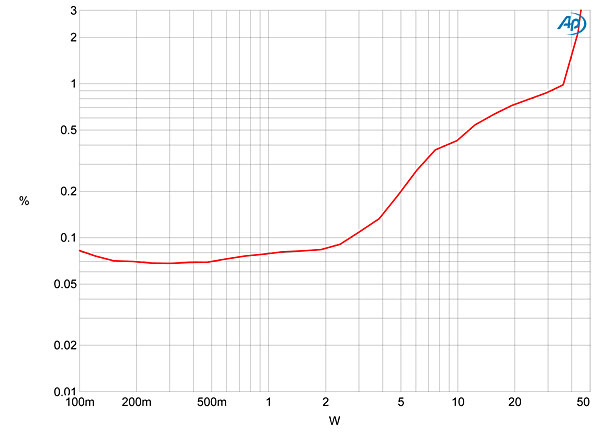


Fig.10 shows how the DiaLogue Premium's percentage of THD+noise changes with frequency in the best case: Triode-connected KT120s from the 4 ohm tap into 8 ohms (blue and red traces) and 4 ohms (cyan and magenta). The rise into both loads from both channels is due to the output transformer's core starting to saturate; the rise at high frequencies is due to the circuit's restricted open-loop bandwidth reducing the amount of negative feedback available. But the rises in THD at the frequency extremes are relatively mild, and the left-channel distortion (blue and cyan traces) is commendably low in the midrange, especially when the 4 ohm tap drives 8 ohms (blue). The right channel (red and magenta) is a little less linear overall. The THD rises a little when the 8 ohm tap is used to drive 8 ohms in Triode mode (fig.11), and rises more when the output mode of operation is switched to Ultralinear (fig.12).

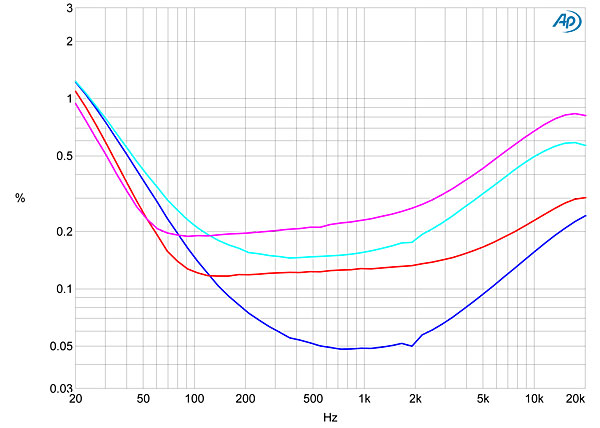
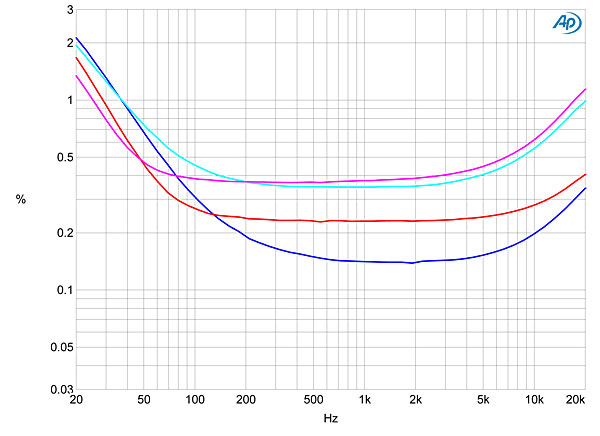
Fortunately, the distortion is predominantly low-order in nature, even at a higher level in Ultralinear mode (fig.13). At low frequencies, the second harmonic is highest in level, followed by the third, then by a regular series of higher-order harmonics (fig.14), thought these are all at or below –66dB (0.05%). This graph was taken in Triode mode with KT120s; the distortion signature was very similar in Ultralinear mode (not shown), though with the third harmonic now almost as high in level as the second. Intermodulation distortion with Triode-connected KT120s (fig.15) was typical for a tubed design, with the second-order difference product resulting from an equal mix of 19 and 20kHz tones lying at –64dB (0.06%), and the higher-order products at 18 and 21kHz lying at –60dB (0.1%). This actually is pretty respectable performance on this test. In Ultralinear mode with KT120s at the same power level, the 1kHz product rose to –59dB, but the 18 and 21kHz tones rose to –52dB (0.25%) (not shown).


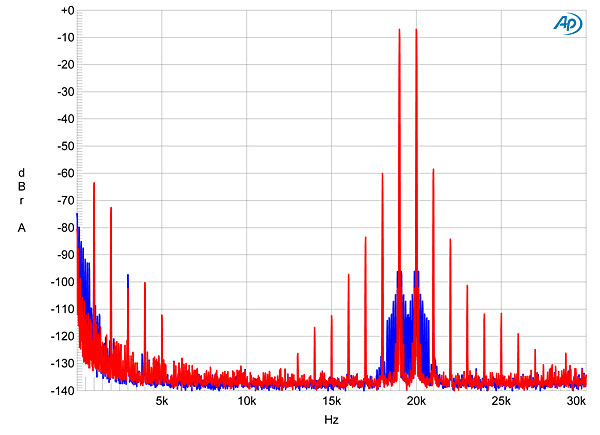
As AD found in his auditioning, the PrimaLuna DiaLogue Premium performs at its best with KT120 output tubes operated in Triode mode. However, that high output impedance, and the rise in distortion when the load impedance drops below the nominal output-transformer tap value, will make careful matching with the user's loudspeakers mandatory to get the best sound from this well-made amplifier.—John Atkinson

Correct me if I am wrong; but shouldn't this be called PrimaChina?

I happen to own the Prologue Power and Dialogue Pre-amps, and thought this review was spot on and in-line with Primaluna values and built qualities. Will PrimaAmerica or PrimaEuro indicates quality, if made there with exorbitant pricing?